Project SAU Leichte PzH18 / 40 / 2 auf Geschützwagen III / IV (Sf), Germany
The terms of reference for the new project implied the use of the existing tank chassis of the production model, and also allowed some of its improvements. On the chassis was required to install a howitzer caliber 105 mm. An important feature of the task was the requirement regarding the possibility of using the gun as the main armament of the self-propelled gun, and as a separate module, lowered to the ground. It was assumed that this will allow self-propelled guns to solve a wide range of combat missions. In addition to firing on the move or with a stop, it was possible to equip a firing position and install a howitzer on it. In this case, the chassis “turned” into a carrier of ammunition, which was supposed to serve the gun.
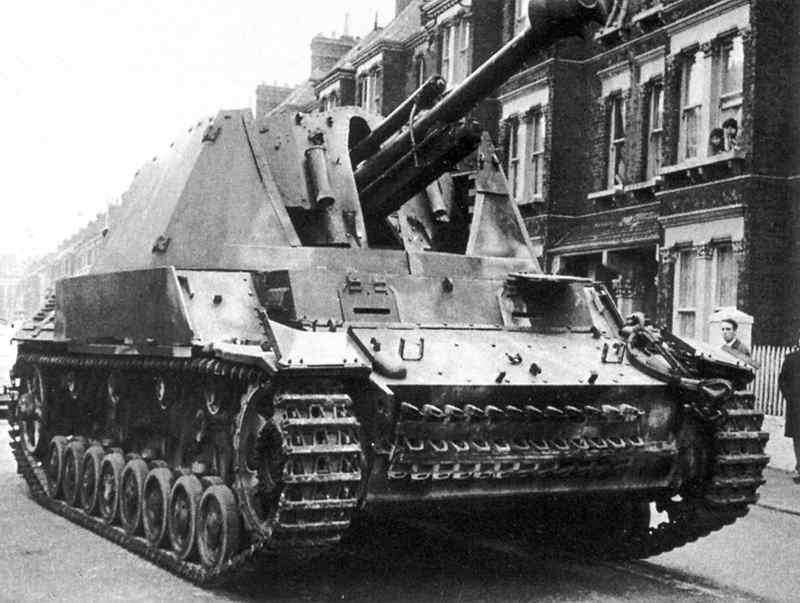
General view of ACS Leichte PzH18 / 40 / 2 auf Geschützwagen III / IV (Sf). Photo Forum.warthunder.ru
The project of the Krupp company meant a serious revision of the base chassis and howitzers, as a result of which the construction of the self-propelled gun could be associated with certain difficulties. Competitors from Rheinmetall offered to use fewer innovations. At the same time, however, it was nevertheless planned to make some adjustments to certain units of the chassis, as well as to develop a number of new parts.
The use of a light field howitzer and an existing type of chassis led to the corresponding designation. The project SAU received the designation Leichte PzH18 / 40 / 2 auf Geschützwagen III / IV (Sf), reflecting the main components of the machine.
As the basis for the new self-propelled armament transporter, it was proposed to use a tracked chassis, known under the designation Pz.III / IV. It was a modification of the medium chassis tank Pz.Kpfw.IV using some aggregates borrowed from Pz.Kpfw.III. In addition, as part of the new project, it was proposed to make some adjustments to the design of the body and other parts of such a machine. So, for the installation of new weapons, it was proposed to change the length of the hull, to supplement its units, as well as to redesign the chassis design.
To accommodate all the necessary units, the authors of the new project had to build up the armored hull of the base tank, due to which its length increased from 5,9 to 6,8 m. Other dimensions remained the same. The hull was welded from sheets of armor no thicker than 20 mm. In this case, the most powerful booking was used in the frontal projection and on the sides, and the stern, roof and bottom were twice as thin. On the roof of the hull, the epaulet was maintained to install the combat module. Aft roof sheet, above the engine compartment, had to be set at an angle to the horizontal. Above the fencing shelves, additional rectangular armored blocks appeared, with the help of which a turret box of the required size was formed.
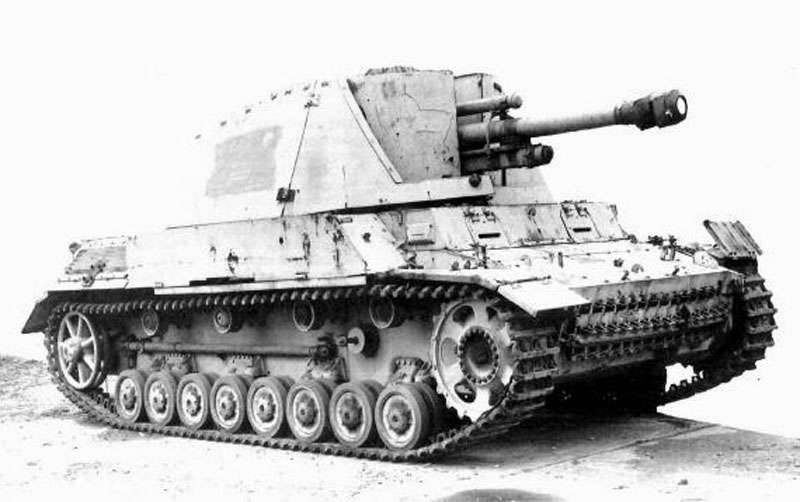
A prototype built for testing. Photo Aviarmor.net
Despite a serious change in the design of the case, the layout of the machine remained the same. In front of the hull were placed transmission units, next to which there had to be a driver and radio operator. The central part of the chassis was given under some units of the fighting compartment, and in the stern was placed the engine with the necessary additional equipment.
When creating a new chassis based on the existing one, the Maybach HL 90 hp carburetor engine with 360 hp power was saved. Through the main clutch, the engine torque was transmitted to the drive shaft, which passed over the bottom of the case. With the help of the shaft, the transmission was provided, the main unit of which was a six-speed gearbox. The transmission was connected to the front drive wheels. Despite the increase in the length of the case, the design of the transmission has not undergone major changes: it was only necessary to lengthen the drive shaft.
Due to the elongation of the hull by about 900 mm, the project authors had to revise the chassis design. Eight rollers were stored on each side, connected in pairs on balancers and mounted on leaf springs. For the correct distribution of the mass of the machine on the track, it was decided to increase the distance between the rollers. It was also proposed to complete the undercarriage with driving wheels borrowed from the Pz.Kpfw.III medium tank. The guide wheels and supporting rollers, in turn, were borrowed from the “Four”.
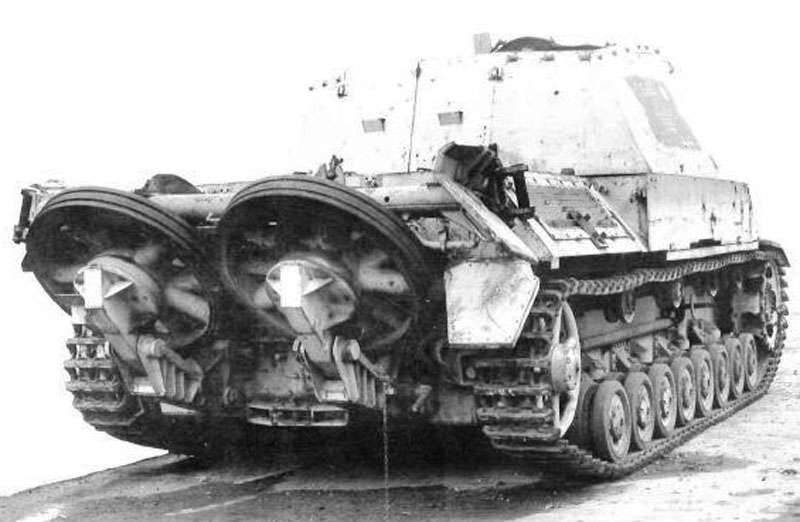
Prototype, rear view. On special supports mounted gun-carriage wheels. Photo Aviarmor.net
An interesting feature of the project Leichte PzH18 / 40 / 2 auf Geschützwagen III / IV (Sf) was the approach to the use of tools. The existing light field howitzer leFH18 / 40 was proposed to be used together with the standard gun carriage. Mounts appeared on the roof of the chassis housing for mounting this device, from which only the wheels were removed before lifting onto the ACS. Mechanisms of fastening the gun carriage made it possible to perform circular horizontal guidance, as well as to rotate an armored turret.
To protect the gunners and guns on the chase, it was necessary to mount a turret assembled from 30- and 10-mm armor plates. In the frontal part of this unit provides a large window for the exit gun. There were beveled sides and a stern leaf. The roof was not installed. All sheets of the tower were mounted with some inclination inward. It should be noted, the tower for the new self-propelled gun did not have a mask. Instead, it was proposed to use a standard howitzer shield. The front window of the tower was designed taking into account the dimensions of the shield, which allowed us to maintain acceptable crew protection. At the same time, the central part of the frontal projection of the tower was covered with a shield, and on the sides there were narrow frontal sheets connected to the sides.
The selected leFH18 / 40 howitzer had a 105 caliber barrel with a 26 caliber length. A horizontal sliding gate and hydropneumatic anti-recoil devices were used. The staff carriage with a wheel run allowed the gun to be horizontally within a sector of width 56 °, the elevation angles varied from -5 ° to + 42 °. For guidance it was proposed to use a telescopic sight and a panorama. The first was intended for direct fire, the second - for closed positions.
The howitzer used split charging with a variable charge. Projectile acceleration to the speed of 520 m / s was provided, which allowed shelling targets at ranges up to 12,3 km. The ammunition ammunition consisted of several types of shells, designed to solve various combat missions.
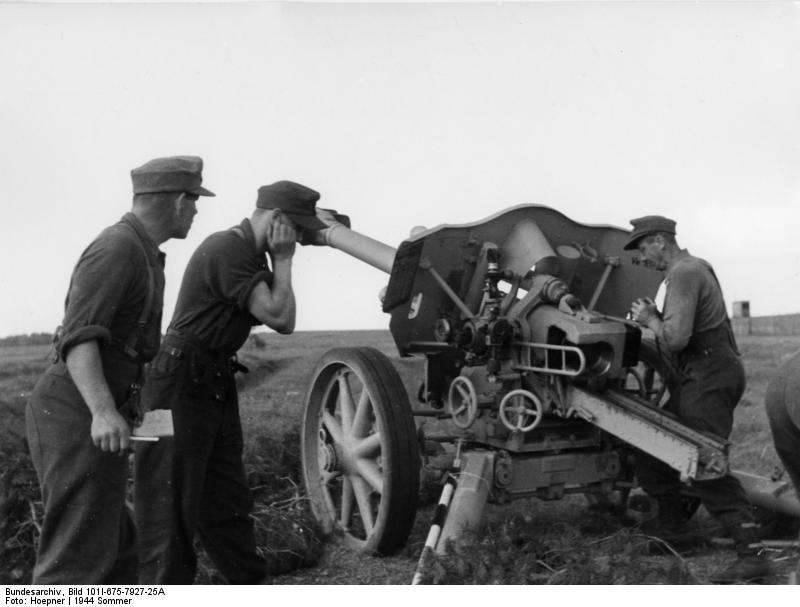
Howitzer leFH18 / 40 on the battlefield. Photo of Wikimedia Commons
When mounted on a tracked chassis, the towed howitzer had to undergo minimal changes made by the calculation forces. From the carriage it was proposed to dismantle the wheels, after which the remaining units of the gun could be raised and placed in the tower. At the same time, the wheels were mounted on special supports mounted on the rear stern of the chassis. This allowed, if necessary, to unload the gun on the ground, put it on a wheel drive and again make towed.
It is noteworthy that the design of the gun carriage was one of the reasons for the emergence of a relatively large tower. Since it was proposed to install it on a self-propelled gun without any modifications, it took a relatively wide tower, protruding beyond the limits of the central part of the hull and hanging over the fenders. From the point of view of the design of the tower, the Leichte PzH18 / 40 / 2 auf Geschützwagen III / IV (Sf) was significantly different from the counterpart developed by Krupp.
In the fighting compartment, formed by a tower and a howitzer shield, was placed the calculation of the weapon, as well as the stacking for ammunition. The dimensions of the turret and the volume of the hull under it made it possible to transport up to 80 projectiles and the same number of shells with a propelling charge. One of the main prerequisites for increasing the ammunition in comparison with the competing development was the large size of the tower, which allowed us to allocate more space for stowages and racks.
Self-propelled artillery installation-transport weapons Heuschrecke 10 had to unload the gun on the ground and lift it back to the body with a special folding portal crane. In the traveling and fighting position of the machine, the details of the crane had to lie on the body of the vehicle, and they had to be lifted before work. The prototypes of this machine immediately received similar equipment, giving them a distinctive appearance. Apparently, the self-propelled gun from the company Rheinmetall also had to get similar units, but the only known prototype of this machine was not equipped with a crane. Perhaps the installation of the lifting device was planned in the future, but was never completed.
The prototype of the self-propelled gun was not equipped with any additional weapons. Thus, the installation for a machine gun, controlled by a radio operator, was removed from the frontal hull sheet. Instead, they placed a second inspection hatch with an armored lid, similar to that installed on the site of the driver. Probably, in the future, the machine could still be equipped with a machine gun or other weapons for self defense. Also at the disposal of the crew should have been small arms in the form of submachine guns or carbines.
According to the project, the Leichte PzH18 / 40 / 2 auf Geschützwagen III / IV (Sf) ACS was supposed to have a combat weight at the level of 25 t. The length of the machine was 6,8 t, width 3 m, height - 2,9 m. the tank with the appropriate weight allowed the car to reach speeds of up to 45 km / h. Power reserve was determined at the level of 300 km. There was a possibility of overcoming various obstacles with characteristics at the level of serial medium tanks.
The self-propelled crew was to consist of five people. In front of the hull, in the department of management, were placed the driver and radio operator. The tower housed space for the commander, gunner and loader. When lowering the guns to the ground, they had to stay with him and fire.
By the winter of 1942-43, the project Leichte PzH18 / 40 / 2 auf Geschützwagen III / IV (Sf) approached the construction stage of an experimental machine for further testing. At the beginning of the 1943, a prototype was assembled on the basis of a new chassis and a serial howitzer, which soon came to the test. At the same time, a prototype was presented for testing in an incomplete set. First of all, he did not receive a gantry crane, designed to lower the gun to the ground and then climb it to the tower. The composition of the remaining components and assemblies is fully consistent with the project.
Thanks to the use of ready-made chassis and howitzer SAU new type had sufficient characteristics of mobility and firepower. She could work in some combat formations with other equipment of that time and execute strikes with an efficiency not worse than the existing field artillery. Thus, the new Leichte PzH18 / 40 / 2 auf Geschützwagen III / IV (Sf) machine, as well as Krupp's Heuschrecke 10, could be of particular interest to the customer. According to the test results, the military began to lean towards a simpler self-propelled gun from Rheinmetall, which did not require serious processing of a howitzer. The rival design was more complex and for this reason it did not fully satisfy the military.
Nevertheless, the presented sample of ACS Leichte PzH18-40-2 auf Geschutzwagen III-IV (Sf) did not quite suit the customer, because of which there was a requirement to recycle the chassis. At least until the end of 1943, the company-developer was engaged in changing the design of the chassis Pz.III / IV in accordance with the new requirements of the customer. It was at this stage of the project was stopped.
According to various sources, until the end of 1944, the command of the army could not decide the further fate of two self-propelled guns with the possibility of dismantling the gun on the battlefield. One of the reasons for this was a dramatic change in views on promising self-propelled artillery mounts. Projects of machines with the ability to remove howitzers previously were of great interest, but over time they ceased to arrange the military, who wished to receive other equipment.
Only six months before the end of the war, these developments were remembered again and, moreover, they even began to discuss the question of putting such equipment into service and launching mass production. However, time was lost, and it was too late to think about building new self-propelled guns. The Allied armies moved ever closer to Germany, and its defeat became only a matter of time. The issue of serial production of Leichte PzH18 / 40 / 2 auf Geschützwagen III / IV (Sf) or Heuschrecke 10 was never resolved until the very end of the war in Europe.
Two projects of promising self-propelled artillery mounts, developed by Krupp and Rheinmetall, could lead to the appearance of new serial equipment with unusual capabilities among the troops. The machines could be used as self-propelled guns with tools, and if necessary, it became possible to divide the ACS into a towed howitzer and chassis capable of performing the functions of a tractor and a carrier of ammunition. Nevertheless, the delay in work, a change in views on the development of armored vehicles and other factors did not allow to complete projects on time and provide the army with new equipment. As part of the Leichte PzH18 / 40 / 2 auf Geschützwagen III / IV (Sf) project, only one self-propelled self-propelled gun was built, after which the assembly of such equipment was not carried out and was not planned. Currently, this machine is an exhibit of one of the German museums.
Based on:
http://aviarmor.net/
http://achtungpanzer.com/
http://ww2history.ru/
Chamberlain P., Doyle H. Complete reference book of German tanks and self-propelled guns of the Second World War. - M .: AST: Astrel, 2008.
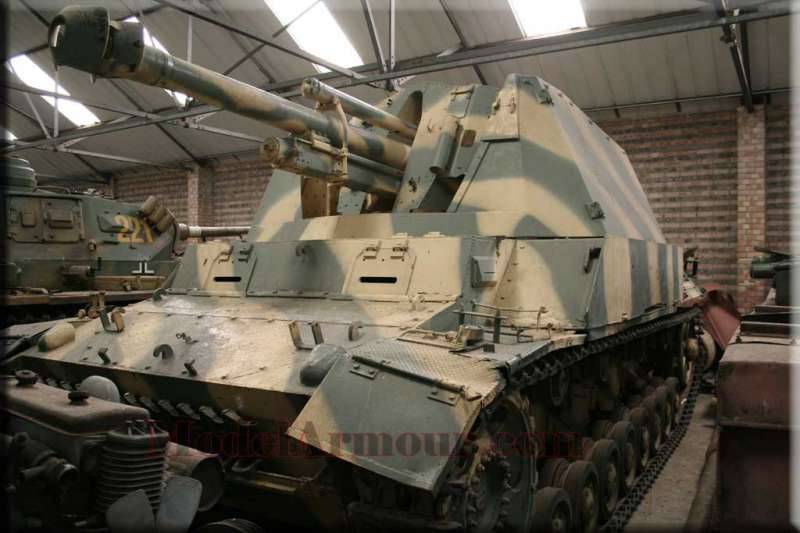
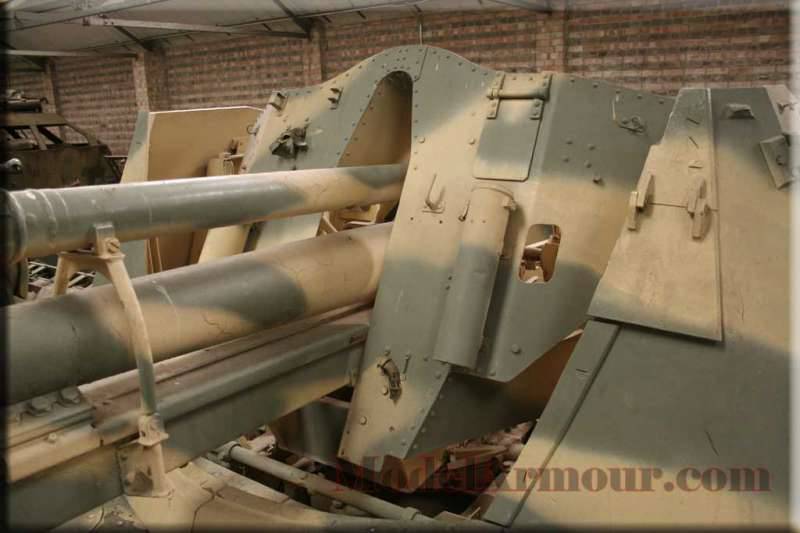
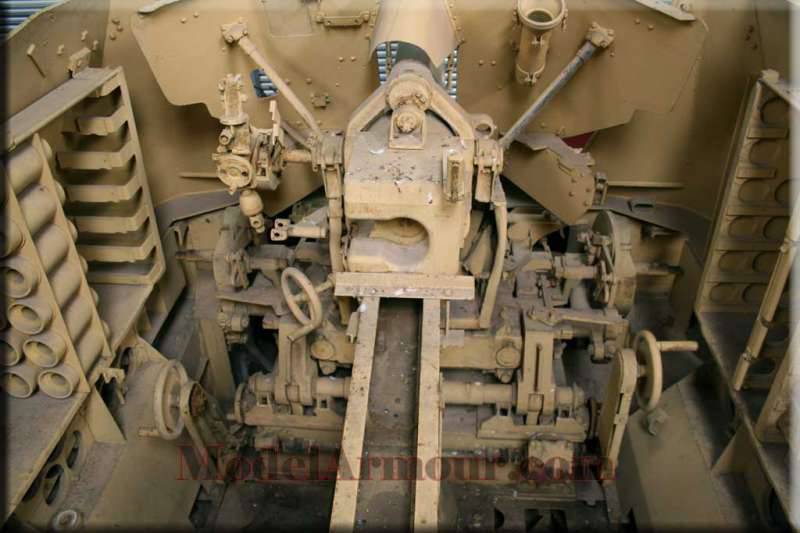
Information